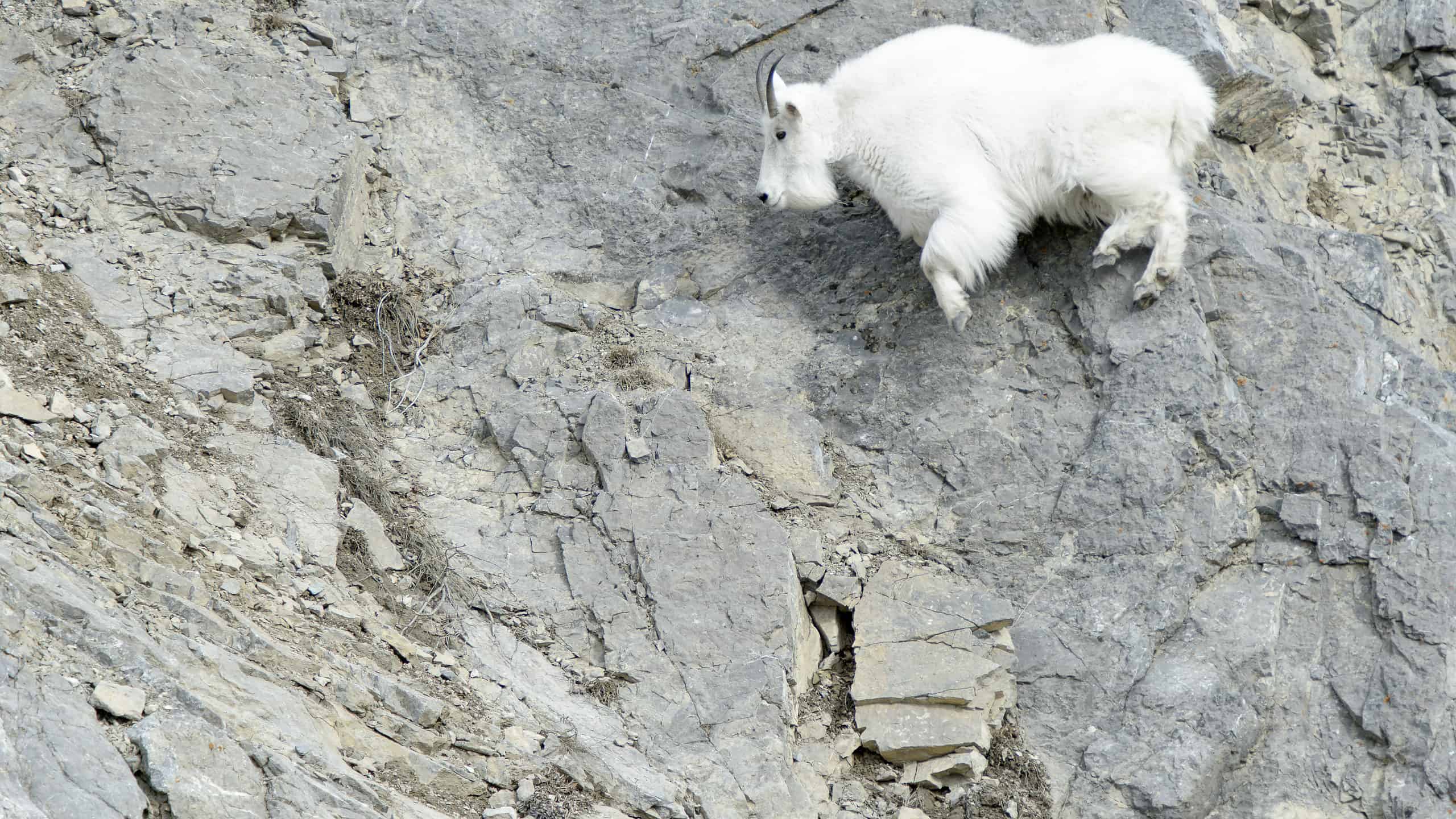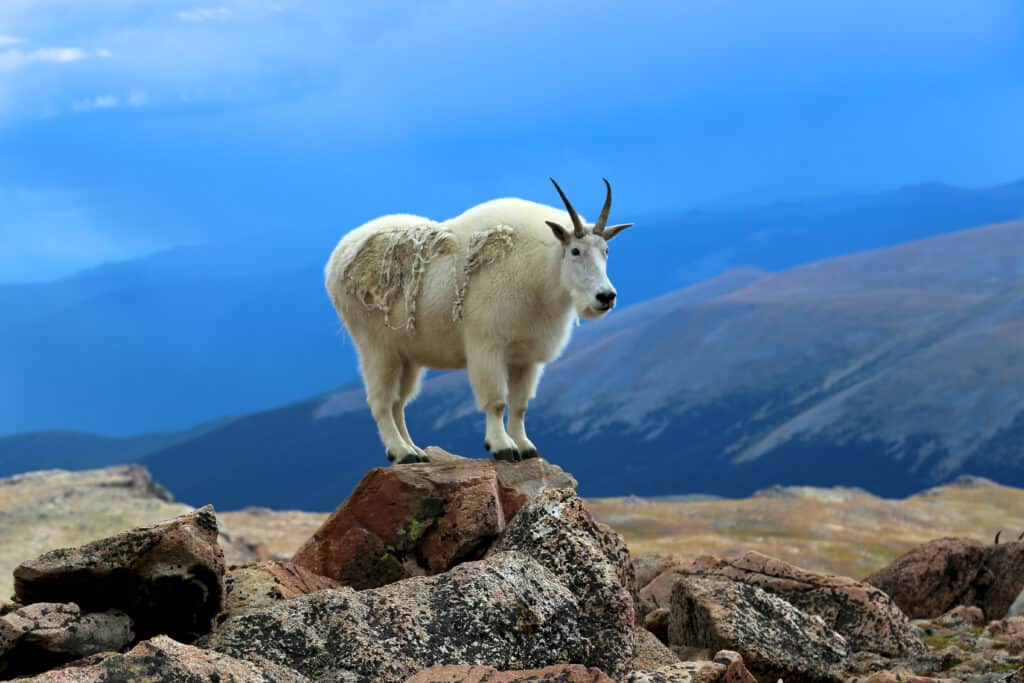Continue reading for our analysis...

There are very few animals on this earth that can traverse a rock face as sheer as the one in this clip. Mountain goats are one of them and sadly, this particular grizzly bear is not. As the video shows, predators sometimes have to take serious risks to secure prey. Sometimes they lose their lives in the pursuit of a meal.
Mountain Goats and Their Habitats

Mountain goats escape predators and access food on cliff faces
©Ververidis Vasilis/Shutterstock.com
Mountain goats (Oreamnos americanus) are not the same goats as the ones we raise for milk and meat. However, they are closely related. They live in western North America and are mainly found in the Rocky Mountains and the Cascades of the United States and Canada.
As well as being great climbers, they are very agile and can leap up to 12 feet. This allows them to leap over rock crevices to escape predators. Their excellent eyesight helps them to spot approaching predators and to pick out the best mountain paths.
Why Don’t Mountain Goats Fall?

Mountain goats have hooves that act like suction cups
©Steve Boice/Shutterstock.com
It’s tragic to see this grizzly bear fall to its death. But the accident occurred because the goat is better adapted to the cliffs than the bear. This gives the goats an evolutionary advantage and somewhere to go to escape predators.
Mountain goats are described in scientific terms as even-toed ungulates. Their hooves are cloven – which means that they separate to give a great grip. Also, there are pads on them that produce friction with the rocks. Added to this are developed dewclaws (a digit that is higher up on the leg) that also prevent slipping. Gripping onto mountainsides is hard work – so they also have strong shoulder and neck muscles.
Scientists have been so impressed with these goats’ ability to move around on sheer cliffs that they have conducted detailed research into the biomechanics of how they do it. They found that goats use their whole body to achieve this feat. The front and rear limbs are moved in such a way that the center of mass is vertically translated up the mountain slope thus maintaining excellent balance. Sadly, the bear could not compete.
Thank you for reading! Have some feedback for us? Contact the AZ Animals editorial team.






